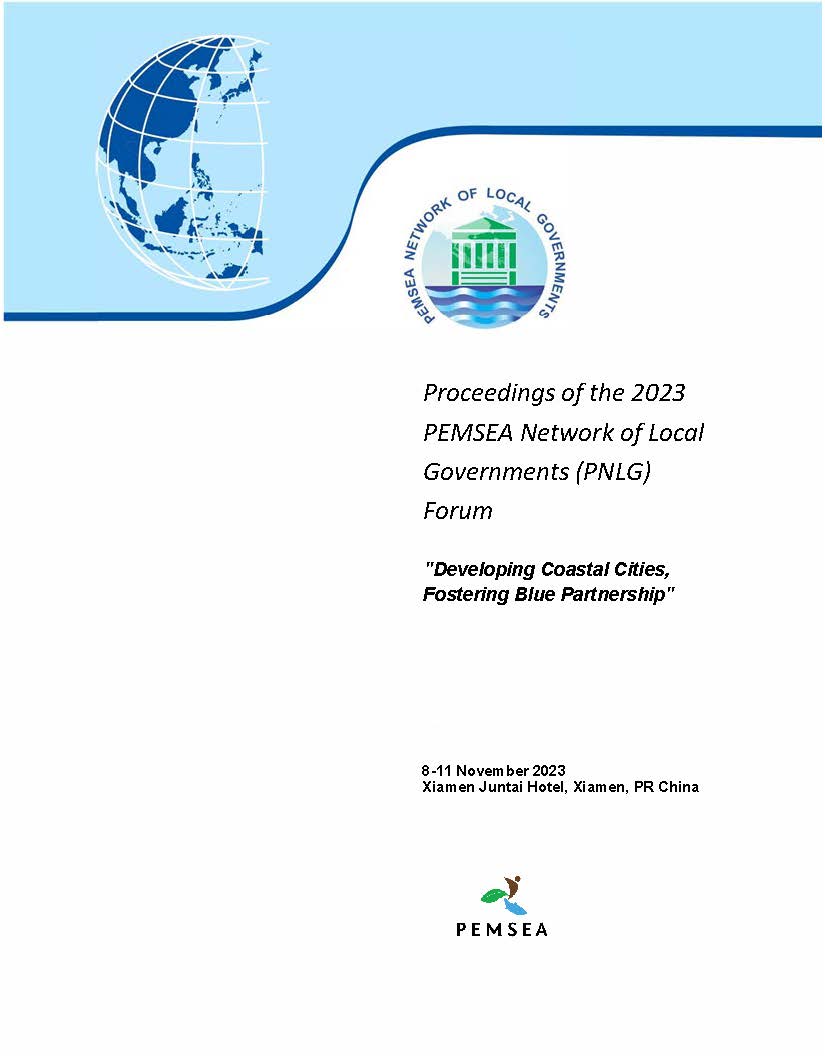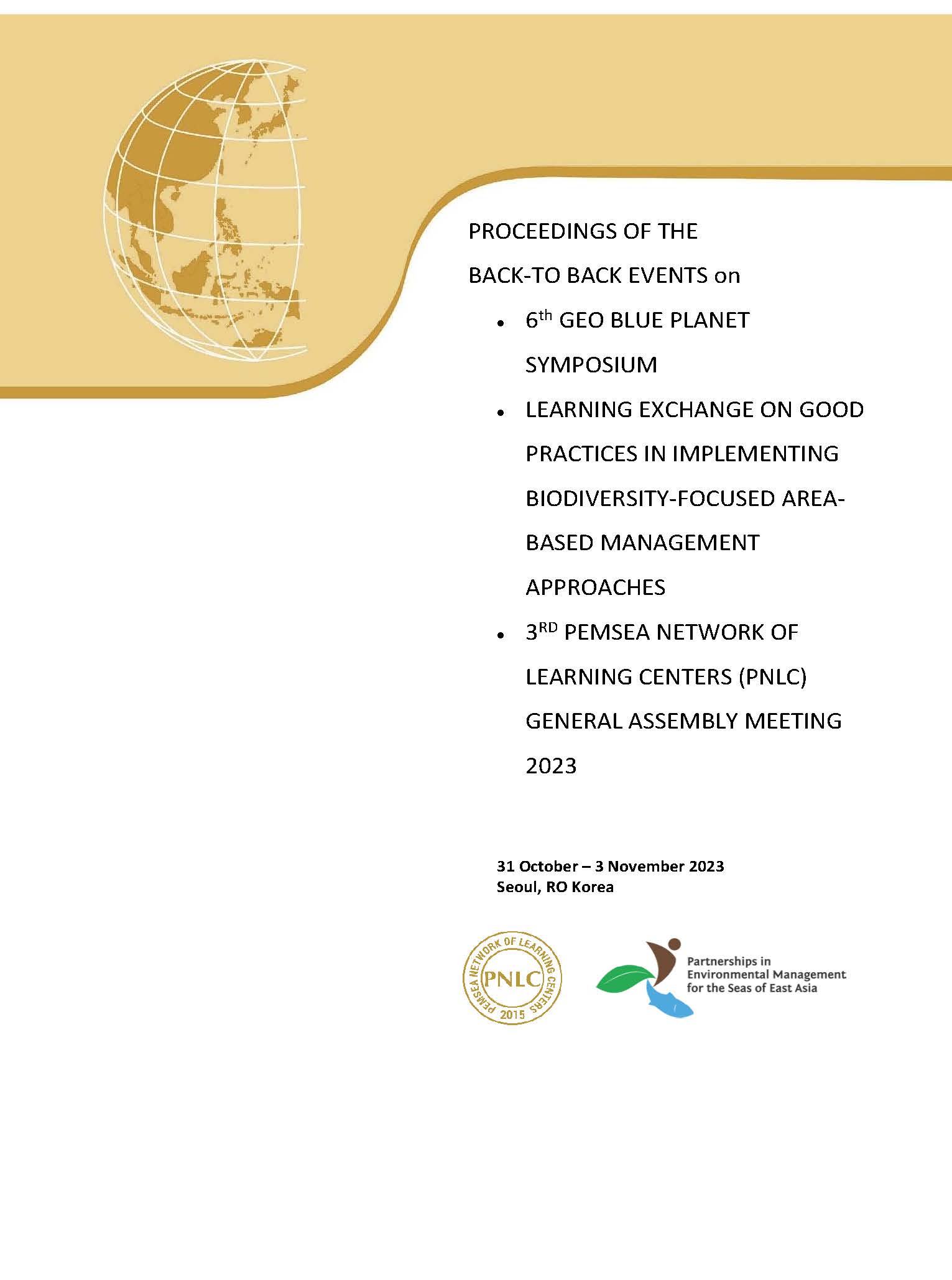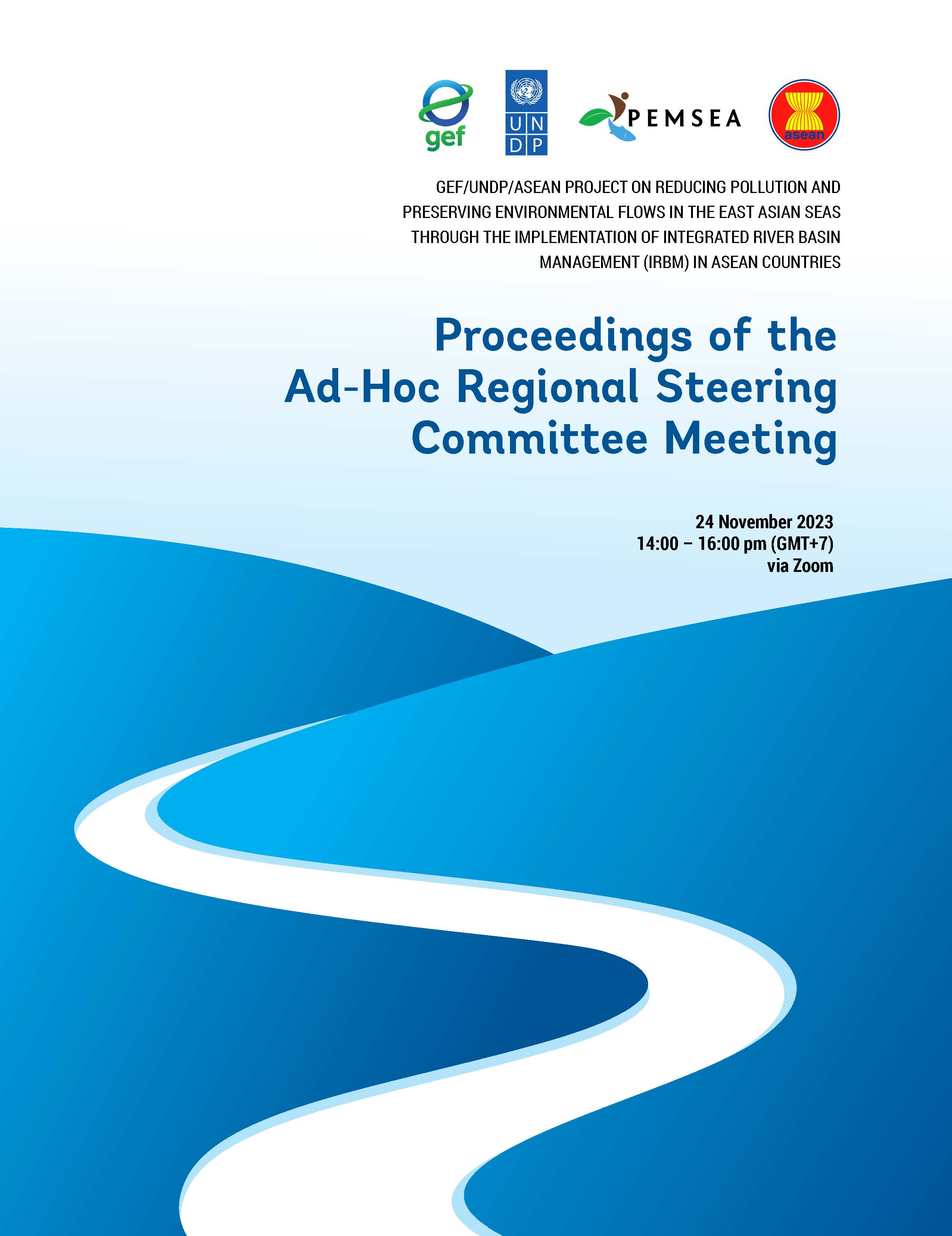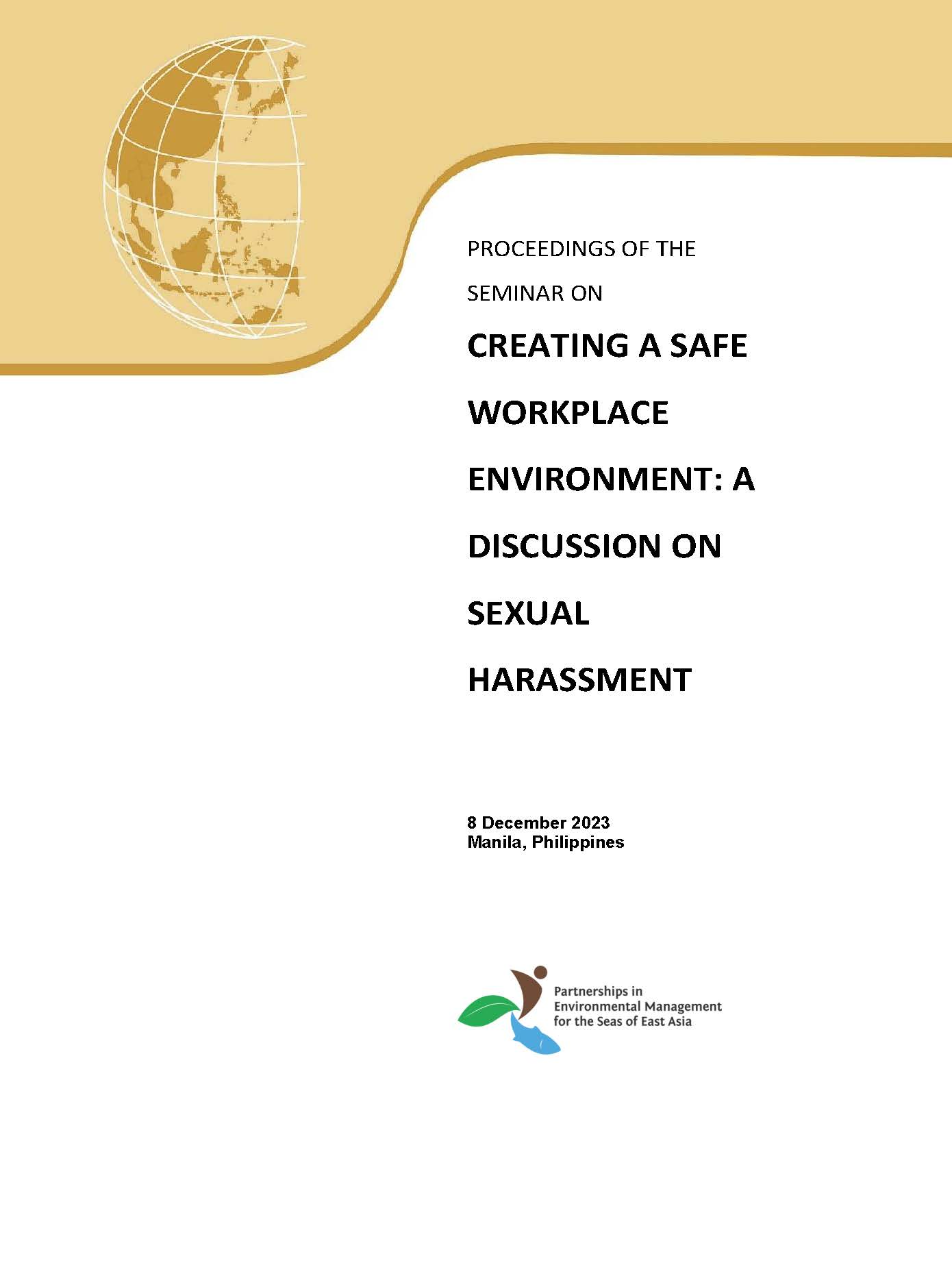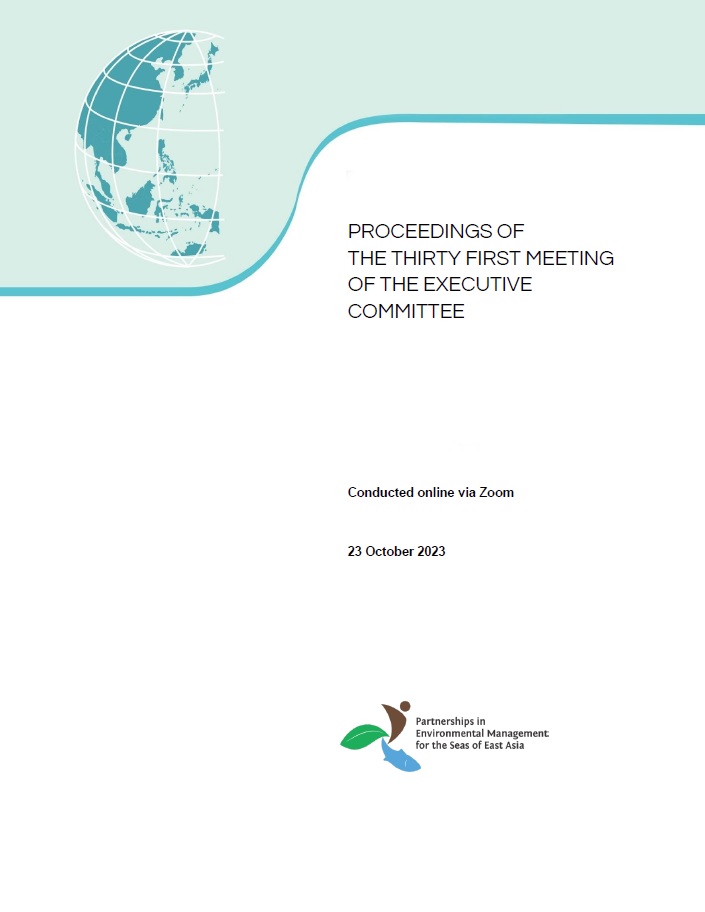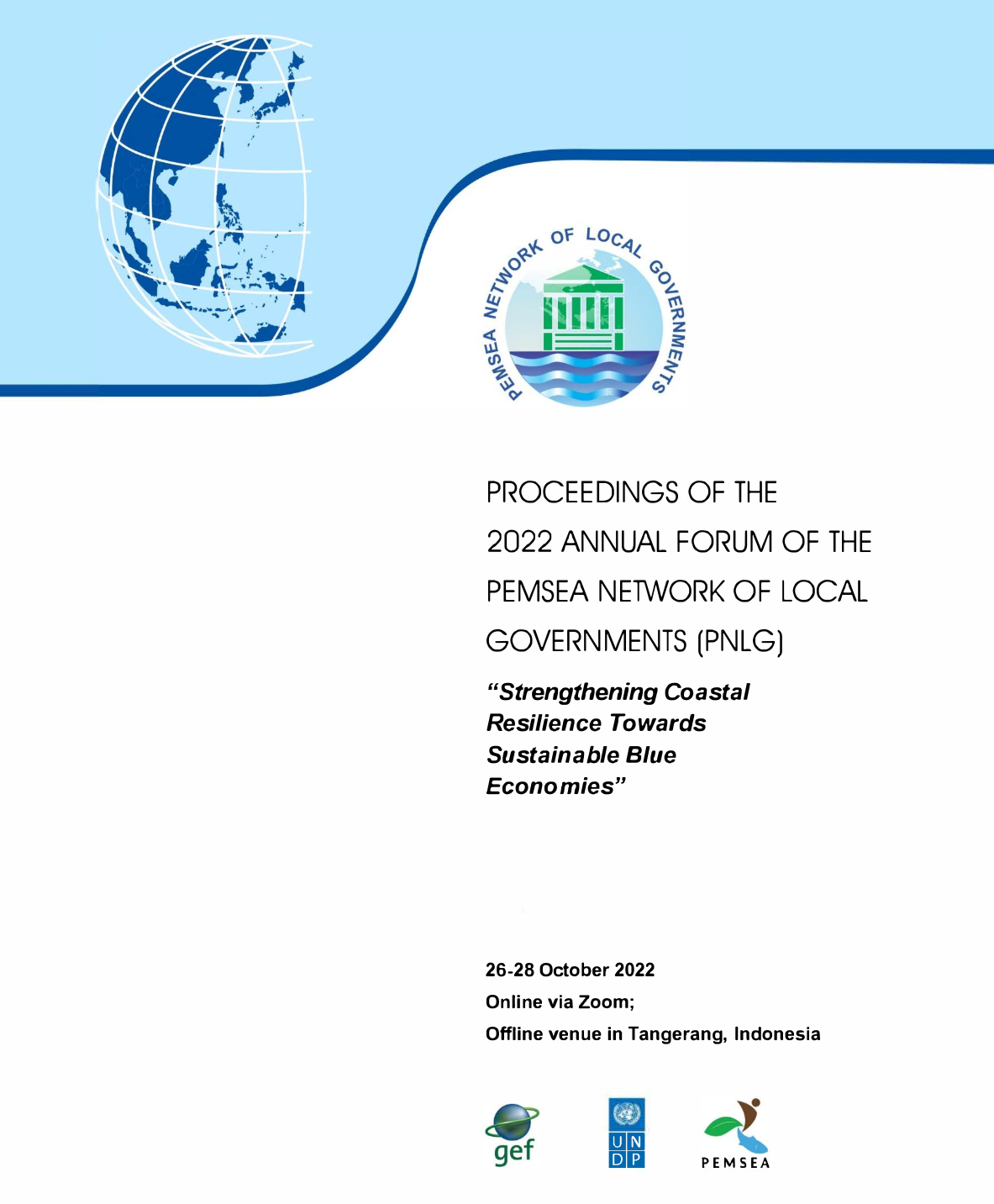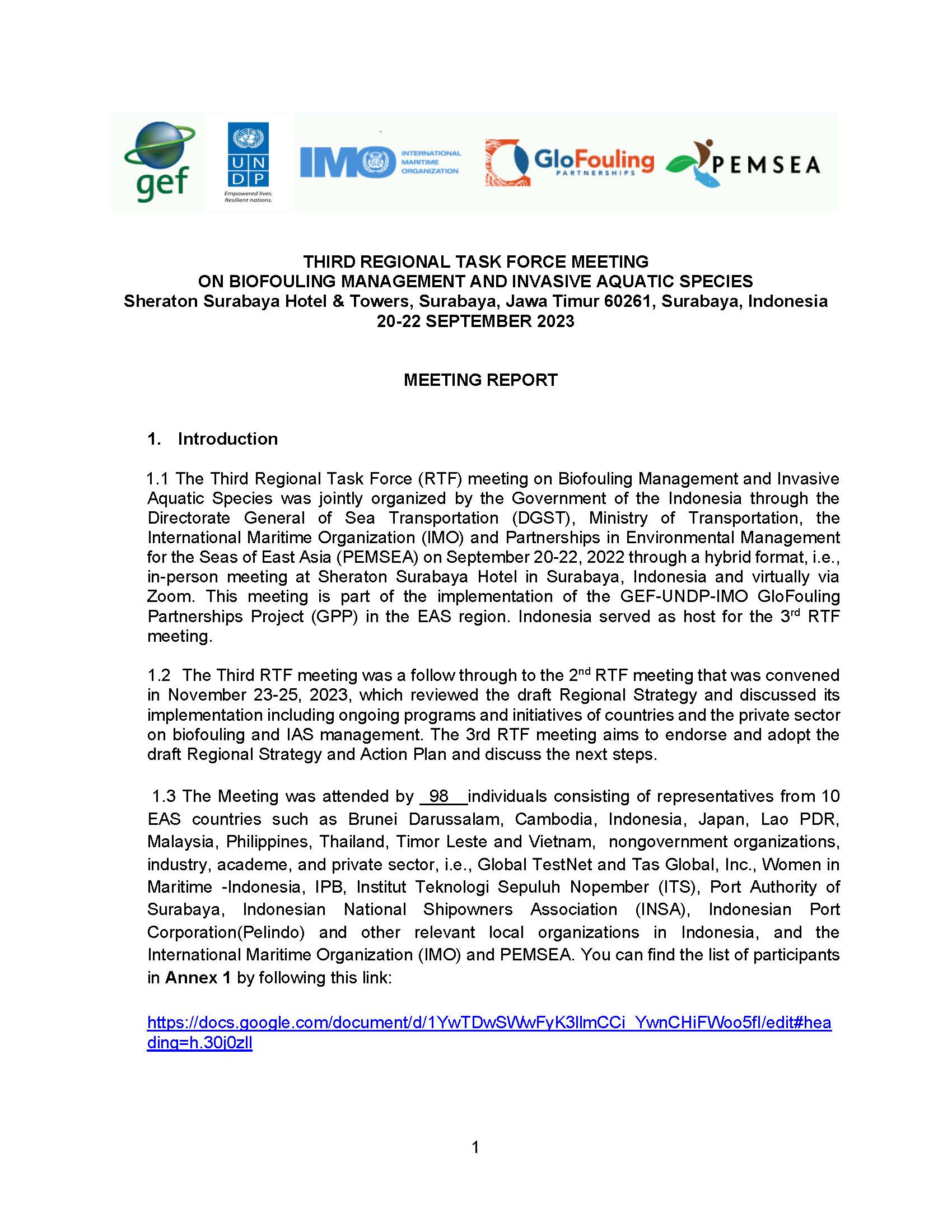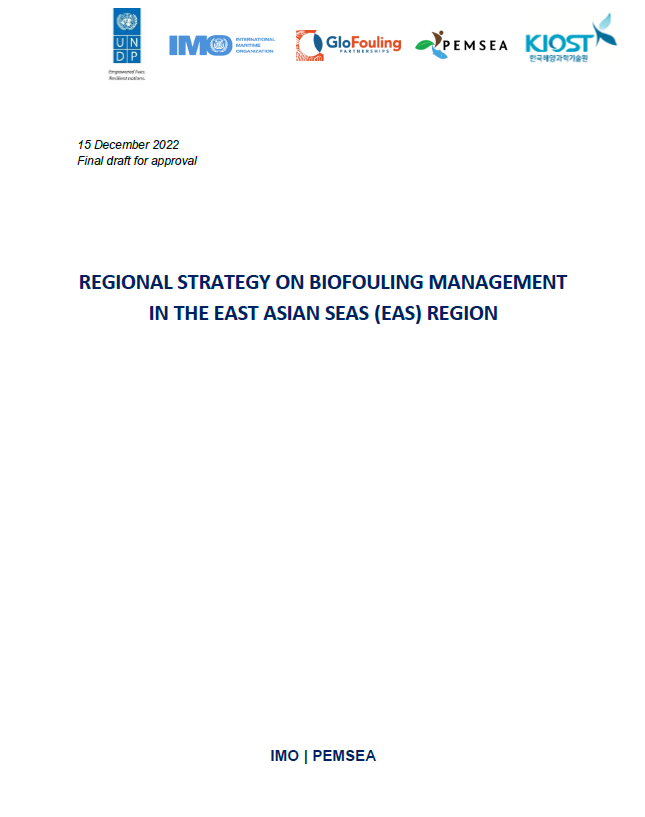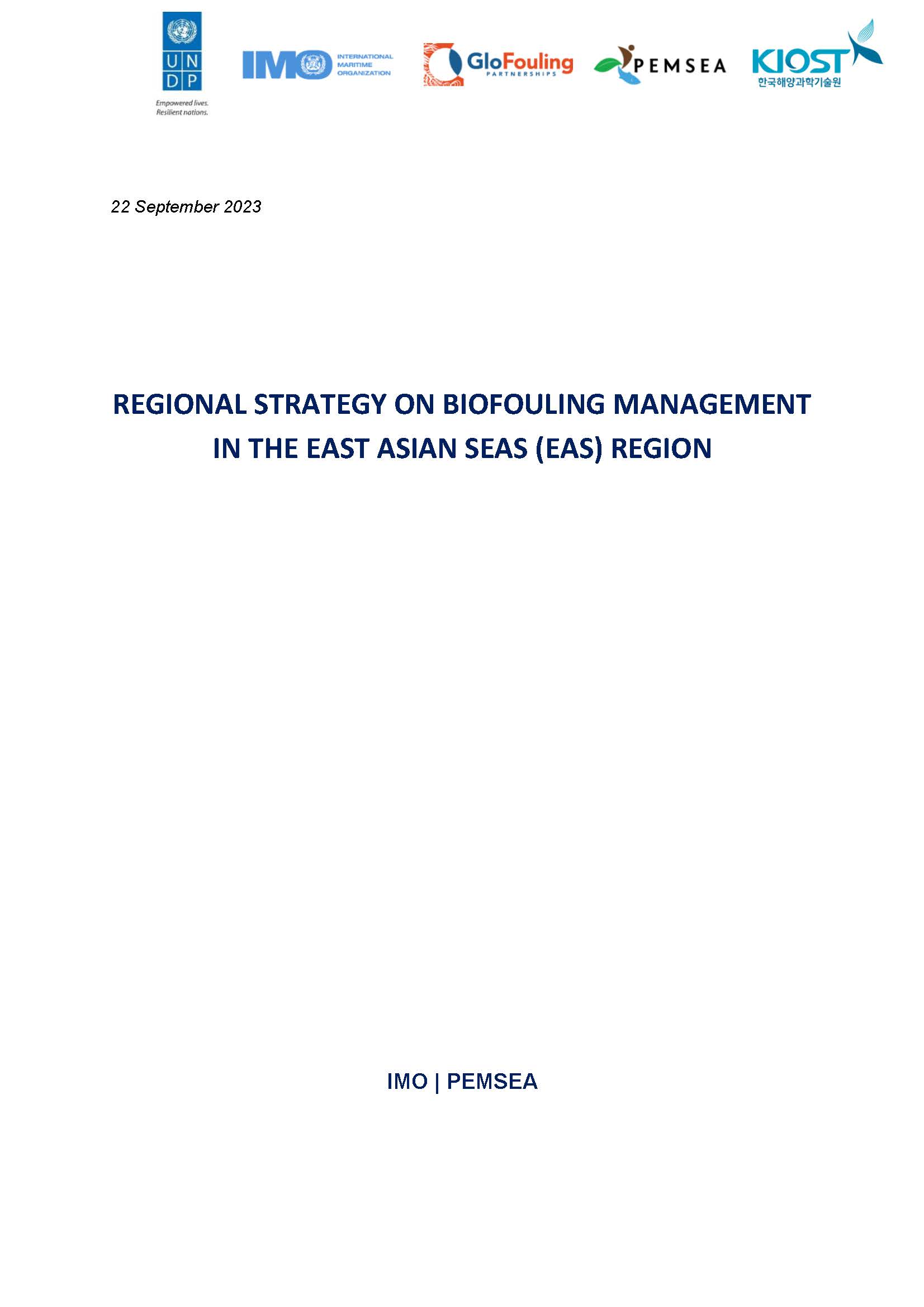
Breadcrumb
Proceedings of the 2023 PEMSEA Network of Local Governments Forum (PNLG) "Developing Coastal Cities, Fostering Blue Partnership"
The 2023 Forum of the PNLG with the theme, “Developing Coastal Cities, Fostering Blue Partnership” was hosted by the PNLG and PEMSEA and co-organized by the PNLG Secretariat, PEMSEA Resource Facility (PRF) and Coastal and Ocean Management Institute (COMI) of Xiamen University (XMU). The forum was conducted on 8-11 November 2023 in Xiamen, China. The PNLG Forum was one of the key events of the Xiamen World Ocean Week.
The Forum was participated by over 130 participants from:
- 23 members from seven countries, namely: Cambodia, China, Indonesia, Malaysia, Philippines, RO Korea, and Timor Leste,
- 4 PNLG Associate members, namely the First Institute of Oceanography, Ministry of Natural Resources, China; Coastal and Ocean Management Institute (COMI) and Fujian Institute for Sustainable Oceans (FISO) of Xiamen University (XMU), China, and National Ocean Technology Center (NOTC) of the Ministry of Natural Resources, China;
- resource speakers and other invited experts,
- the PNLG Secretariat, and
- the PRF.
Proceedings of PEMSEA Network of Learning Centers (PNLC) back - to - back Events
The document contains the proceedings of three back-to-back activities that were conducted in Seoul, Republic of Korea from 31 October to 3 November 2023.
The activities include:
- The 6th Geo Blue Planet Symposium on Digital Solution for Sustainable Ocean Community on October 31
- PEMSEA Learning Exchange on Good Practices in Implementing Biodiversity Conservation-Focused Ecosystem and Area-based Management Approaches on November 1
- The 3rd PEMSEA Network of Learning Centers (PNLC) General Assembly Meeting on November 2
The activities were organized by the PEMSEA Resource Facility (PRF) with support from RoKorea Ministry of Ocean and Fisheries, the Korea Maritime Institute (KMI), and the Korea Management Corporation (KOEM), and the Korea Blue Carbon Research Center.
Participants include 39 representatives from 17 of the 21 PNLC members, officers, and staff from KMI, KOEM, the Korea Blue Carbon Research Center, and the PEMSEA Resource Facility (PRF).
IRBM: Proceedings of the Ad-hoc Regional Steering Committee Meeting
The Ad-hoc Regional Steering Committee (RSC) meeting of the GEF/UNDP/ASEAN Project on Reducing Pollution and Preserving Environmental Flows in the East Asian Seas through the Implementation of Integrated River Basin Management in ASEAN Countries (IRBM Project) was held on November 24, 2023 via video conference (Zoom).
The meeting was co-chaired by Dr. Inthavy Akkharath, Chair of the ASEAN Working Group on Water Resources Management (AWGWRM) and Mr. Gerd Trogemann, Manager of United Nations Development Programme (UNDP) Bangkok Regional Hub. RSC members representing the National Focal Points (NFPs) of the AWGWRM from 6 participating ASEAN Member States (AMS), namely Cambodia, Indonesia, Lao PDR, Malaysia, Philippines and Vietnam, the ASEAN Secretariat (ASEC), the East Asian Seas Executive Committee (EAS EC) and UNDP Regional Bureau for Asia and the Pacific and Bangkok Regional Hub attended the meeting.
The Regional Project Management Unit (RPMU), hosted by PEMSEA Resource Facility (PRF), served as Secretariat to the RSC.
Proceedings of the Seminar on Creating a Safe Workplace Environment: A Discussion on Sexual Harassment
A seminar on 'Creating a Safe Workplace Environment: A Discussion on Sexual Harassment was conducted on 8 December 2023 in Quezon City, Metro Manila, Philippines. The seminar was participated by PEMSEA Resource Facility management and staff.
The objectives of the seminar were to:
- Describe behaviours that constitute sexual harassment in the workplace;
- Suggest practical guidelines in dealing with sexual harassment in the workplace and in promoting a safe work environment that caters to diverse staff;
- Discuss the dynamics of power, provilege and social relations in the workplace in understanding and unpacking sexual harassment issues; and,
- Express their commitment in promoting a safe and violence-free work environment.
Attached is a copy of the proceedings of the seminar which also helped inform the refinement of PRF's Sexual Harassment Policy and Guidelines.
Proceedings of the Thirty First Meeting of the Executive Committee
The 31st PEMSEA EC Meeting was conducted virtually on 23 October 2023 via Zoom. Participants of the meeting included the EC, particularly the Chair and Co-Chair, Intergovernmental Session Chair and Co-Chair, the Technical Session Chair of the EAS Partnership Council (PC), and the Executive Director of the PEMSEA Resource Facility (PRF). Observers from the China PEMSEA Center and the Ministry of Environment (MoE) of Cambodia also attended the meeting. PRF served as the secretariat of the meeting.
DOCUMENT NUMBER DOCUMENT TITLE EC/31/DOC/01a List of meeting documents EC/31/DOC/01b Provisional program EC/31/DOC/02 EAS Asian Seas Congress 2024 Theme and Timeline EC/31/DOC/02a Confirmation Letter from China to host 2024 EAS Congress EC/31/DOC/03 Updates on the PEMSEA Blue Carbon Program EC/31/DOC/03a Annex 1. PEMSEA Blue Carbon Roadmap EC/31/DOC/04 Summary Report of NCP Applicants from China EC/31/DOC/05 Optimization of EAS Partnership Council Technical Session EC/31/DOC/06 Updates on the PEMSEA Sustainability Plan PROCEEDINGS OF THE 2022 ANNUAL FORUM OF THE PEMSEA NETWORK OF LOCAL GOVERNMENTS (PNLG)
The PEMSEA Network of Local Governments (PNLG) Annual Forum 2022 was held in Tangerang Regency, Indonesia, from 26-28 October 2022. The event was hosted by the Tangerang Regency, in coordination with PEMSEA, the Ministry of Environment and Forestry (MoEF) of Indonesia, the Center for Coastal and Marine Resources Studies (CCMRS) of IPB University of Indonesia, and the PNLG Secretariat. It was themed “Strengthening Coastal Resilience Towards Sustainable Local Blue Economies”, and consisted of the following activities:
• a General Assembly where matters related to the PNLG’s governance, policies
and status of operationalization were discussed;• Technical workshops that facilitated knowledge and experience sharing
among the PNLG members and other key agencies, partners, and programs in
Indonesia;• Field visits that showcased on-the-ground implementation of the Regency’s
relevant programs and corresponding achievements, particularly on habitat
protection/restoration and alternative livelihoods;• An exhibit featuring relevant local products and good practices; and
• A series of networking events and cultural presentations.
Proceedings for the Third RTF Biofouling Management
The Third Regional Task Force (RTF) meeting on Biofouling Management and Invasive Aquatic Species was jointly organized by the Government of the Indonesia through the Directorate General of Sea Transportation (DGST), Ministry of Transportation, the International Maritime Organization (IMO) and Partnerships in Environmental Management for the Seas of East Asia (PEMSEA) on September 20-22, 2022 through a hybrid format, i.e., in-person meeting at Sheraton Surabaya Hotel in Surabaya, Indonesia and virtually via Zoom. This meeting is part of the implementation of the GEF-UNDP-IMO GloFouling Partnerships Project (GPP) in the EAS region. Indonesia served as host for the 3rd RTF meeting.
Regional Strategy on Biofouling Management in EAS/ASEAN region
Over 40% of international trade passes through Southeast/East Asian Seas region. This exposes the region’s marine ecosystems to invasive species attached to shipping hulls and other equipment.
The regional task force on biofouling management adopted the regional strategy on biofouling management which sets out a clear action plan which includes promoting research and development and technology exchange in the region, the establishment of national biofouling governance, the development of sustainable financing mechanisms within national and region levels among other things.
Regional Strategy-Biofouling-EAS Region
Over 40% of international trade passes through Southeast/East Asian Seas region. This exposes the region’s marine ecosystems to invasive species attached to shipping hulls and other equipment.
The regional task force on biofouling management adopted the regional strategy on biofouling management which sets out a clear action plan which includes promoting research and development and technology exchange in the region, the establishment of national biofouling governance, the development of sustainable financing mechanisms within national and region levels among other things.
